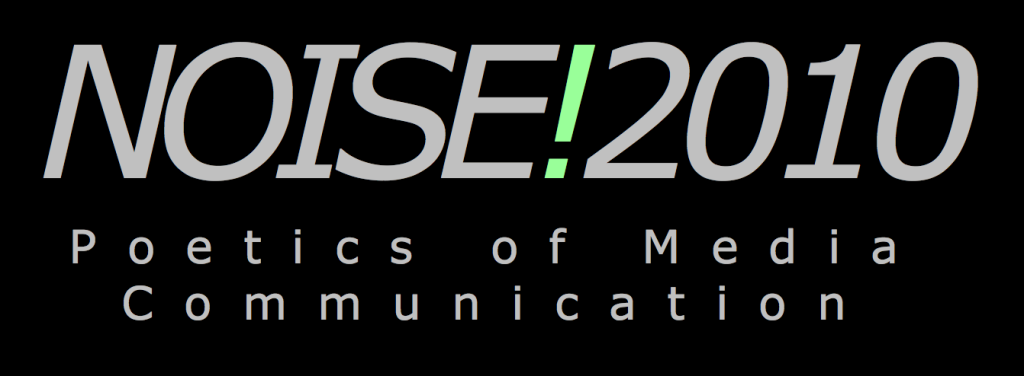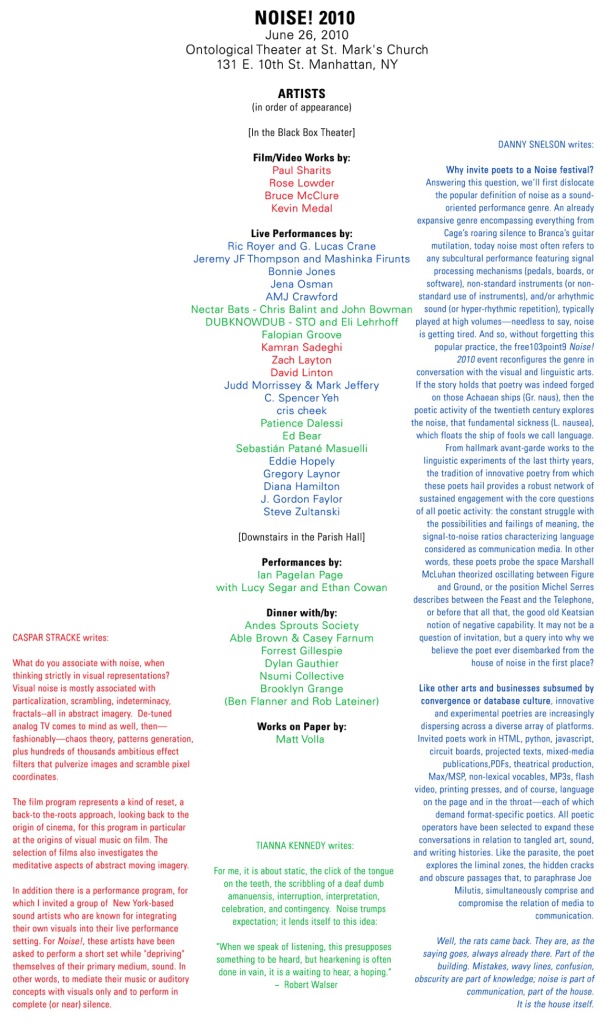Introduction:Why invite poets to a Noise festival? Answering this question, we’ll first dislocate the popular definition of noise as a sound-oriented performance genre. An already expansive genre encompassing everything from the Cage’s roaring silence to Branca’s guitar mutilation, today noise most often refers to any subcultural performance featuring signal processing mechanisms (pedals, boards, or software), non-standard instruments (or non-standard use of instruments), and/or arhythmic sound (or hyper-rhythmic repetition), typically played at high volumes — needless to say, noise is getting tired. And so, without forgetting this popular practice, the free103point9 Noise!2010 event reconfigures the genre in conversation with the visual and linguistic arts. If the story holds that poetry was indeed forged on those Achaean ships (Gr. naus), then the poetic activity of the twentieth century explores the noise, that fundamental sickness (L. nausea), which floats the ship of fools we call language. From hallmark avant-garde works to the linguistic experiments of the last thirty years, the tradition of innovative poetry from which these poets hail provides a robust network of sustained engagement with the core questions of all poetic activity: the constant struggle with the possibilities and failings of meaning, the signal-to-noise ratios characterizing language considered as communication media. In other words, poets probe the space Marshall McLuhan theorized oscillating between Figure and Ground, or the position Michel Serres describes between the Feast and the Telephone, or before that all that, the good old Keatsian notion of negative capability. It may not be a question of invitation, but a query into why we believe the poet ever disembarked from the house of noise in the first place? Like other arts and businesses subsumed by convergence or database culture, innovative and experimental poetries are increasingly dispersing across a diverse array of platforms. Invited poets work in HTML, python, javascript, circuit boards, projected texts, mixed-media publications, PDFs, theatrical production, Max/MSP, non-lexical vocables, MP3s, flash video, printing presses, and of course, language on the page and in the throat—each of which demand format-specific poetics. All poetic operators have been selected to expand these conversations in relation to tangled art, sound, and writing histories. Like the parasite, the poet explores the liminal space, the hidden cracks and obscure passages that, to paraphrase Joe Milutis, simultaneously comprise and compromise the relation of media to communication. Well, the rats came back. They are, as the saying goes, always already there. Part of the building. Mistakes, wavy lines, confusion, obscurity are part of knowledge; noise is part of communication, part of the house. It is the house itself. |

